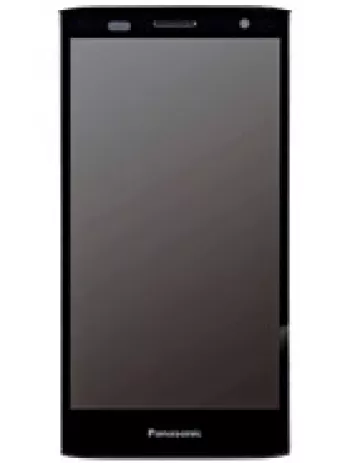
Overview of Panasonic VS3
The Panasonic VS3 was a feature phone introduced in the early 2000s, making its debut during the first quarter of 2005. As one of the distinct devices from Panasonic, the VS3 packed several features that were considered advanced at the time. With its robust functionalities and stylish design, it aimed to attract a wide array of users looking for a mix of functionality and aesthetics.
Design and Build
The Panasonic VS3 featured a compact design with dimensions of 96 x 46 x 17.6 mm, which made it easily portable and a perfect fit for pockets. Weighing in at just 102 grams, or 3.60 ounces, it was lightweight and convenient for everyday use. The phone made use of a Mini-SIM and was characterized by its classic clamshell design, which was quite popular at the time for those who enjoyed the tactile experience of flipping phones open and closed. This design choice not only provided protection for the screen when closed but also added a distinctive flair to the phone.
Display Characteristics
The display on the Panasonic VS3 was a TFT screen capable of displaying 16M colors. Though the screen size isn't specified, it was designed with a resolution of 240 x 320 pixels, providing decent clarity and brightness for viewing texts and images. This resolution was quite comparable to other devices of its time, making it suitable for basic multimedia functions and clear visibility outdoors.
Camera Features
The main camera on the Panasonic VS3 was a single 1.3 MP shooter. While this may seem modest by today's standards, at the time, it was sufficient for taking quick snapshots and capturing memories on the go. This camera also supported video recording in QCIF format, which allowed users to shoot short video clips, an appealing feature nonetheless for a feature phone.
Memory and Storage
The Panasonic VS3 was equipped with 32MB of internal storage. Regrettably, there was no option for expanding storage with a card slot. Nonetheless, this capacity was adequate for storing a modest selection of photos, ringtones, and a list of contacts. Speaking of contacts, the phonebook had the ability to store up to 500 entries, a generous count for users needing to manage a substantial contact list. Additionally, the call record functionality stored up to 50 dialed, 50 received, and 20 missed calls.
Connectivity and Communications
Connectivity in the Panasonic VS3 was maintained through GSM technology supporting bands GSM 900 / 1800 / 1900. It included GPRS Class 10 for data communication, although it did not feature EDGE or WLAN capabilities. The absence of Bluetooth and WLAN support meant that data transfer was primarily achieved through the proprietary USB connection or the infrared port, which was used for short-range wireless data exchange between devices.
Audio Capabilities
Considering audio capabilities, the Panasonic VS3 did not include a loudspeaker or a 3.5mm headphone jack, which was a limitation for users wanting to listen to music or multimedia audio. However, the phone supported downloadable polyphonic and MP3 ringtones, providing a customizable alert experience for calls and messages. Vibrations and classic ringtones were additional options for phone alerts.
Battery Life
The phone was powered by a removable Li-Ion 830 mAh battery. This battery was able to deliver up to 210 hours of standby time and up to 4 hours and 30 minutes of talk time. These metrics reflected decent battery performance during an era when long-lasting phone calls and reliable uptime were crucial for efficiency in daily communications.
Software and Other Features
Running as a feature phone, the Panasonic VS3 incorporated several functionalities catering to daily needs. Messaging capabilities included SMS, EMS, MMS, and Email, supporting basic text and multimedia communication. The browser was WAP 2.0/xHTML ready, enabling simple web browsing, although mobile internet was not as advanced then as it is now.
Java support via MIDP 2.0 allowed the installation of additional compatible applications and games. Pre-installed games included well-known titles such as Sonic the Hedgehog and Soccer, offering some entertainment to users.
Conclusion
Overall, the Panasonic VS3 was a compelling blend of design, functionality, and practicality for its time. While lacking some of the more modern features such as advanced connectivity options or high-resolution cameras, it provided users with essential communication tools and a stylish experience. Its robust design and dependable battery life made it a well-regarded choice among feature phones shortly before the ascent of the smartphone era.
Key Features of Panasonic VS3
- Supports GSM technology with 2G bands (GSM 900 / 1800 / 1900)
- Compact dimensions: 96 x 46 x 17.6 mm, lightweight at 102 g
- TFT display with 16 million colors, resolution of 240 x 320 pixels
- Internal memory of 32MB with a phonebook capacity of 500 entries
- 1.3 MP main camera with video recording capability in QCIF format
- Messaging support for SMS, EMS, MMS, and Email
- Includes popular games like Sonic the Hedgehog and Soccer
- Java support with MIDP 2.0
- Infrared port available for data transfer
- Removable Li-Ion 830 mAh battery with up to 210 hours standby time
- Proprietary USB connection for charging and data transfer
Panasonic VS3 - Key Disadvantages
- Lack of EDGE support for faster data speeds
- No expandable memory card slot
- Low internal memory of 32MB
- No front-facing camera for selfies
- No loudspeaker
- No 3.5mm headphone jack
- No WLAN or Wi-Fi connectivity
- No Bluetooth for wireless connections
- No GPS positioning system
- No FM radio functionality
- Dependent on a proprietary USB interface
- Discontinued model, making support and parts hard to find


















View Also
More Phones
All Rights Reserved +14266 Phones © Mobilawy 2025

























